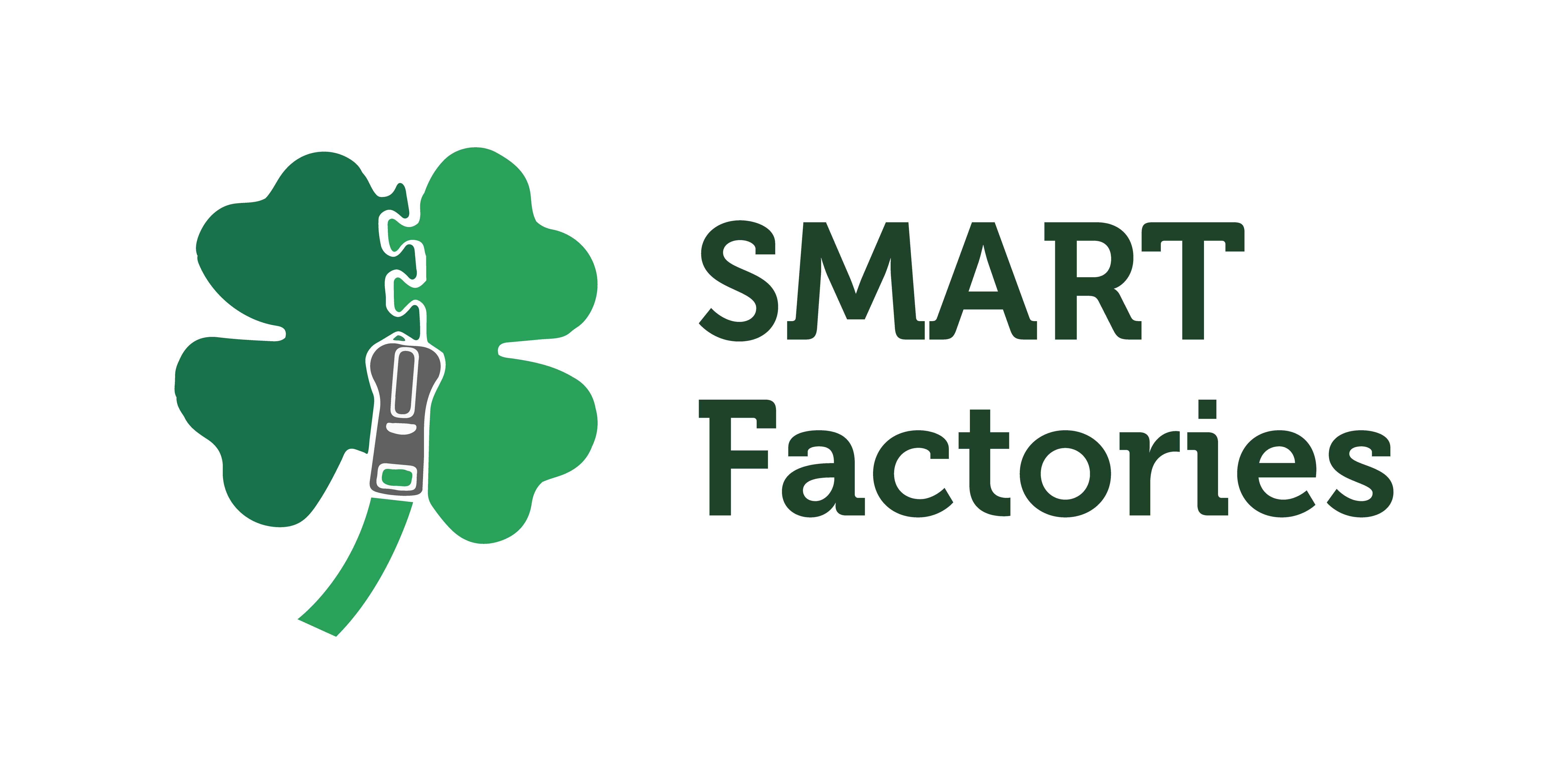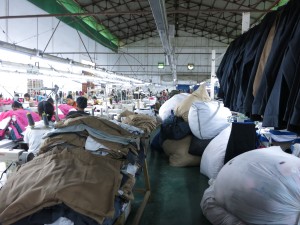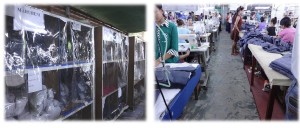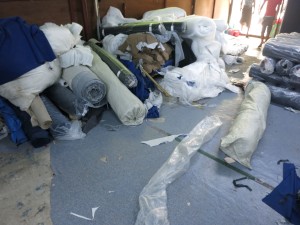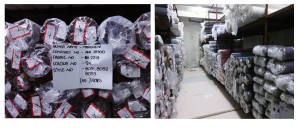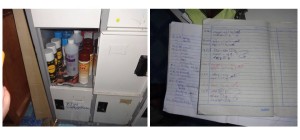How Hallmark Manufacturing Co. Ltd. takes big strides ahead with view to production management, social standards and occupational and health and safety.
Hallmark participated enthusiastically in SMART Myanmar’s various programs and takes pride in its achievements. This article presents a few examples of changes the management brought about during a short period of time.
Floor planning and organization
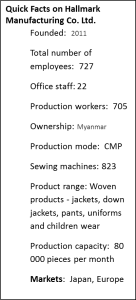 During the first factory visit of Smart Myanmar along with international consultants from ESGE (Germany), production departments were disorganized and did neither have a structured floor planning nor sufficient space. Due to the production area being overloaded, there was no smooth production flow.
During the first factory visit of Smart Myanmar along with international consultants from ESGE (Germany), production departments were disorganized and did neither have a structured floor planning nor sufficient space. Due to the production area being overloaded, there was no smooth production flow.
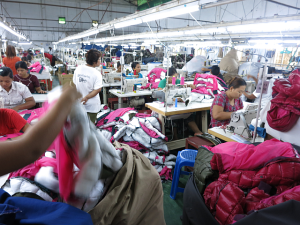
Suggestions of SMART Myanmar consultants:
Generally, all items which do not necessarily belong to the production floor need to be removed and brought to a storage area. The layout of the production floor and the set-up of space between the workstations shall follow international good practice.
A space was assigned as a storage area and equipped with racks. The sewing department is no longer overloaded which allows the line in-charge to move the bundles from one work station to the other without space constraints. Bundles of cut garment pieces that are ready for sewing are placed in a designated area, adjacent to the sewing lines and easily accessible for the line in-charge. Thus, the line-in charge can monitor the production flow and plan accordingly.
Efficient use of raw materials
The fabric warehouse was not organized. Rolls of fabric were placed haphazardly on the floor and became unwrapped. Dirt and moisture damaged several meters of fabric (in average 1 to 2 meters at the start of the roll and 5 to 10 cm at the edges) and made them unusable for production.
Such practice caused Hallmark and their customers a considerable loss of resources, especially with fabric accounting for 2/3 of the total production cost.
Likewise a quality inspection and recording of incoming fabrics, accessories and auxiliary items was lacking.
Smart Myanmar´s suggestion with ESGE consultants
A well-organized garment production starts with a proper warehouse. A warehouse in-charge coordinates the quality and quantity inspections of delivered materials, attaches tags with customer information and production order and keeps inventory records about received and issued items. Materials are stored according to customer and production order.
Director Mr. Moe Pwint instructed his team to clear the whole warehouse and install racks. The warehouse in-charge was trained to carry out the following steps for maintaining the factories inventory:
• Check incoming goods by
1. quantity
2. weight
3. quality
• Assure the fabric is properly packed to protect it from dust, dirt and humidity
• Store all fabrics from same customer and production order in one place
• Place information tags for identification
• Keep an inventory register by recording “in” and “out”.
Due to arrange the storage system the raw material wastage is now decreased by approximately 3%.
Human Resource Management
As part of their social standards agenda and in order to comply with international social standards Hallmark made use of the training and advise of the Social Compliance Academy conducted by Systain, an international consulting firm and made some changes and improvements in its human resources management.
Labor contracts were prepared for all workers in the company. Previously, only workers who joined the company from 2013 onwards were given contracts.
As birth certification and ID cards are not mandatory in Myanmar, it is advised that age identification for new workers is done by medical practitioners. Thus, Hallmark’s new entrants were sent for age identification in order to avoid employing under-age workers.
For day-job workers actual working hours were registered in order to compensate them adequately.
A bonus payment system was adapted which takes into account the seniority (years of employment in the factory) and the skill level of workers.
Deductions from workers’ salaries for uniforms was done away with.
Management introduced a suggestion box for giving workers an opportunity to voice grievances.
Fire Safety
As a result of its participation in the Social Compliance Academy Hallmark upgraded the fire safety of its factory – fire extinguishers were placed at the required locations and maintained according the user’s manual. Fire exits were vacated and marked and escape routes identified. Large emergency evacuation maps were placed in all departments.
Tools with the potential to cause injuries were secured, e.g. scissors were tied with ribbons at each workstation and labeled with the worker’s name.
Chemical Safety
Chemicals are used in various stages of manufacturing garments, e.g. ink for stamping in cutting department and stain removers in the finishing department. Previously, all workers that used chemicals had unrestricted access to these chemicals. Names of users, quantity of consumption were not recorded and chemicals not returned to the storage area which was reason for concern with regard to health and fire safety issues.
